Introduction to the Gods of Ancient Egypt
The early stages of ancient Egyptian history and mythology were presumably influenced by the natural surroundings and events affecting ancient Egypt itself. For example, the cyclic pattern of the sun and the seasonal pattern of Nile floods (that enriched the soil) played crucial roles in establishing the water and the sun as symbols of life. The very geographical core of the ancient Egyptian civilization – the fertile Nile Delta, was surrounded by arid lands and deserts (populated by fringe groups of raiders and nomads).
Inspired by these factors, the people of ancient Egypt regarded their land as a tranquil haven. Their stable land was fenced by swathes of lawless tribal realms. This essentially created the trichotomy of order, chaos, and renewal; themes that are integral to the ancient Egyptian gods and goddesses.
On the other hand, historical events also played their part in ‘shaping’ the Egyptian gods and goddesses by the end of the Predynastic Period, circa 3100 BC. This was the age when Egyptian pharaohs united both the Upper and Lower realms. This in turn made such kings the focus of adulation in the religious context.
Furthermore, the progression of history and mythology is not linear, and as such many of the Egyptian deities evolved (and merged) into other entities and aspects. Some of these changes mirrored the preference of the ruling classes of the said period. Taking these factors into consideration, here are the twenty major ancient Egyptian gods and goddesses you should know about.
Contents
- Introduction to the Gods of Ancient Egypt
- Nun: The Primeval God – Associated with a Deep Watery Mass
- Atum: The Creator God – Deity of the Setting Sun
- Amun, Ra, and Amun-Ra: The Ancient Gods of Sun and Wind
- Mut: The Mother Goddess or The Queen of Gods
- Khonsu: The Youthful God – The Deity of the Moon
- Hathor: The Cow Goddess – The Motherly Deity
- Bastet/Sekhmet: The Feline Goddesses – Deities of Love and War
- Maat: The Goddess of Order – The Deity of Truth and Justice
- Ptah: The Creator God – The Deity of Life and Crafts
- Nut: The ‘Starry’ Goddess – The Deity of the Sky
- Isis: The Egyptian Goddess Associated with Royalty and Magic
- Osiris: The Dead God – The Deity of the Underworld
- Horus: The Falcon God – The Deity of War and Kingship
- Set: The Antagonist God – The Deity of Chaos
- Min: ‘The Lord of the Eastern Desert’ – The Deity of Fertility
- Thoth: The Ibis God – The Patron God of Writing and Wisdom
- Sobek: The Crocodile God – The Deity of the Nile
- Taweret: The Hippo Goddess – The Deity of Protection
- Aten: The ‘Controversial’ Sun God – The Personification of the Sun
- Khepri: The Beetle God – Associated with the Morning Sun
- Summary of Ancient Egyptian Gods
Nun: The Primeval God – Associated with a Deep Watery Mass
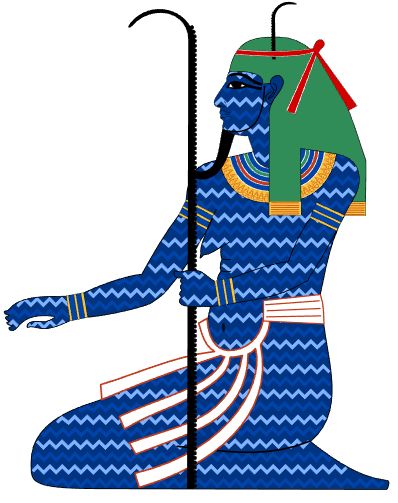
Every mythology tends to start with primordial origins, and in Egyptian mythology, that scope is covered by the ancient Egyptian gods and goddesses – Nun and Naunet (the feminine form).
In essence, the ancient Egyptians perceived Nun as the watery abyss that basically held the universe by which the sphere of life was borne. This watery mass had enigmatic characteristics – with its depth embodying both nothingness and infinity. It also served as the source of all aspects of divine and earthly existence.
So in many ways, Nun, like Tiamat – the Mesopotamian primordial goddess of the oceans, was associated, albeit neutrally, with the forces of chaos. Physically, Nun was often represented as a bearded man with blue or green skin (thus suggesting his connection with the watery mass of the Nile and fertility).
Interesting Fact About Nun: He was also depicted as a frog or a frog-headed man (as part of the Ogdoad or Eight Primordial Gods system practiced at Khmunu or Hermopolis) or even a hermaphrodite with discernable breasts.
Atum: The Creator God – Deity of the Setting Sun
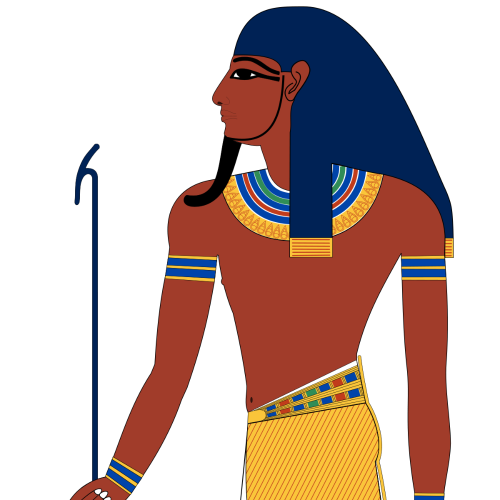
Atum (or Atem), with his very name pertaining to the ‘complete one’, was venerated as the creator god of the universe and the ancient Egyptian deities. The powerful host of beings was crafted from his ka (flesh), thus signifying the essence of Atum in all parts of the physical realm.
According to the Heliopolitan creation myth, Atum was the very first god – essentially the first creator (or Self-Created One) who emerged from the chaotic abyss of Nun to give form and genders to other gods. Some stories mention how he came out of the primordial egg (or a blue lotus), while other myths suggest that Atum was ‘self-born’ on the mound that came out from the waters of Nun.
Atum was responsible for ‘birthing’ Shu – the primordial god of air (and wind) and Tefnut – the primordial goddess of moisture (and rain). These two elemental deities, in turn, gave birth to the sky (Nut) and the earth (Geb) – the gods responsible for creating powerful deities like Osiris, Isis, and Set (discussed later in the article).
In essence, Atum was venerated as the major creator of the lineage of gods. He was depicted as a man who wore the dual white and red crowns of both Lower and Upper Egypt. Iusaaset (or Saosis in Greek), an early mother goddess referred to as ‘grandmother of gods’ was also perceived as the feminine counterpart to Atum.
Interesting Fact About Atum: It should be noted that on occasions, Atum was also visualized as an aged man associated with the setting sun – thus making him a sun god who regenerated during the night (and emerged as Khepri during dawn and Ra during the afternoon).
Amun, Ra, and Amun-Ra: The Ancient Gods of Sun and Wind
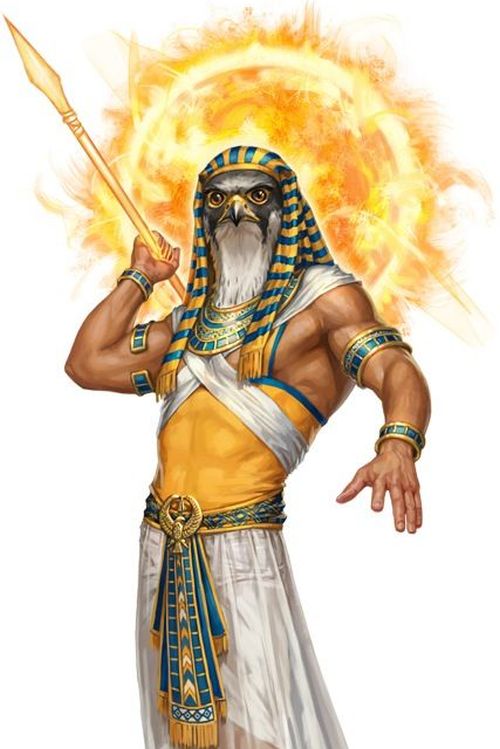
Amun was the divine entity that represented the air and the sun – and was often considered one of the most important ancient Egyptian gods. Sometimes portrayed as the king of Egyptian gods and goddesses, Amun was also the patron deity of Thebes, the royal capital during the impressive New Kingdom era of Egypt, circa 16th century BC to 11th century BC.
In fact, in the earlier centuries, Amun was a minor god, and as such played second fiddle to war gods like Montu. However, the New Kingdom period saw the rise of the deity, who was venerated as the Self-Created One (like Atum).
Ra – the sun god (when the sun was at its peak), on the other hand, was considered among the most powerful ancient Egyptian deities. He was associated with the Pharaoh – so much so, that by Fifth Dynasty, almost every ruler was symbolically hailed as the son of Ra.
The sun god was also associated with the earlier supreme god Atum of Heliopolis. And over time, especially during the New Kingdom, the thriving Amun cult merged the two entities Amun and Ra into a composite god known as Amun-Ra.
This composite sun god was hailed as the “Lord of truth, father of the gods, maker of men, creator of all animals, Lord of things that are, creator of the staff of life.” According to many scholars, Amun-Ra symbolized the combination of the invisible force (of wind) with the visible majesty (of the life-giving sun). This establishes an all-encompassing deity that covered most aspects of creation.
Interesting Fact About Ra: Ra was also perceived as the force of light and order that battles chaos (signified by the monstrous serpent god Apep or Apophis) every day – for the sun to rise. Thus Ra emerging victorious from his daily scuffle with the serpent deity was mirrored by the Egyptian belief in light’s victory over darkness (symbolized by the cyclic pattern of day and night).
Mut: The Mother Goddess or The Queen of Gods
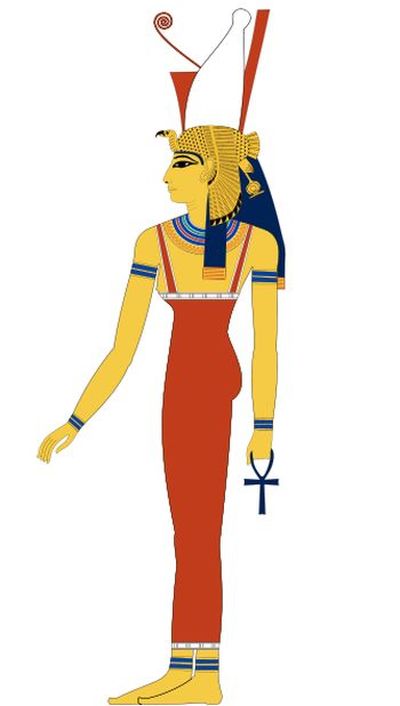
Mut (also called Maut or Mwt) was often regarded as the wife and consort of Amun during the Middle Kingdom phase of ancient Egypt. She was venerated as the ancient Mother Goddess of Thebes (or Waset, pertaining to present-day Luxor).
Interestingly enough, the deity replaced Amaunet, the earlier consort of Amun during the aforementioned Ogdoad or Eight-Gods system. The shift suggests the rise of a new triad of Egyptian gods who were worshiped in the temple of Amun at Ipet-Resyt (Luxor).
This triad consisted of Amun, Mut, and their adopted son Khonsu – the moon god (discussed in the next entry). Consequently, when Amun was merged with Ra, Mut was referred to as the ‘Eye of the Ra’ – an honorific title held by many successive major Egyptian goddesses.
The very name ‘Mut’ was associated with ‘mother’, while Mwt also referred to vultures. To that end, it is probable that the ancient Egyptians perceived vultures as nurturing creatures, which alludes to their ‘motherly’ nature. In that regard, Mut, as the Queen of Gods, was depicted as a woman with wings wearing a crown or royal headdress (or sometimes a vulture headdress).
She was also represented as a vulture in various hieroglyphs. Interestingly, the mother goddess Mut worshipped at the Temple of Amun, was extolled with the epithet – “Mut, Who Giveth Birth, But Was Herself Not Born of Any”.
Interesting Fact About Mut: Mut was even depicted on occasions as a male. This perhaps had to do with how Egyptians thought there were no male vultures in existence since the two genders are similar in appearance to the human eye.
Khonsu: The Youthful God – The Deity of the Moon
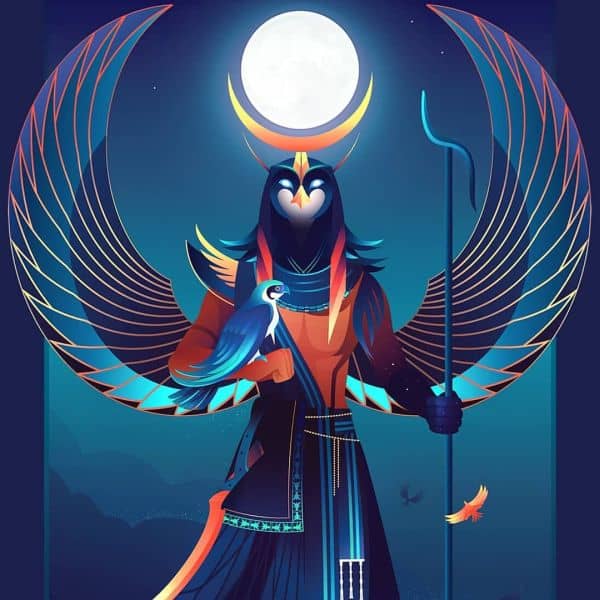
Khonsu was regarded as the adopted son of Amun and Mut – and their triad gained prominence at Thebes, the capital of Egypt during various ages. He was also worshiped as the Egyptian god of the moon (and also time and even healing). Quite intriguingly, while Khonsu was venerated as the amiable scion of Amun during the New Kingdom era, his origins rather alluded to the darker side of affairs during the earlier periods.
To that end, in the Old Kingdom era, Khonsu was described as a ‘bloodthirsty deity’ (as mentioned in the Pyramid Texts) and ‘Khonsu who lives on hearts’, with one mythical narrative suggesting how he, helped by dead kings, feasted on the hearts of other gods.
Reverting to his more genial persona, as perceived during the New Kingdom, Khonsu was depicted as a young man (mostly in a mummy pose) with a sidelock (or braid) and a curved beard – features that hinted at both his youthful and godly nature.
The very name ‘Khonsu’ was possibly derived from the word khenes (hns), which means ‘to cross’ (alluding to his journey across the sky), thus suggesting his association with the moon.
To that end, Khonsu embodied the crescent moon’s light and was further represented as an imposing bull during the full moon. Khonsu, the protector, was possibly also venerated as a deity of love, fertility, menstrual cycles, and lifespans (often worshiped along with Ptah – the creator god, discussed later in the article).
Interesting Fact About Khonsu: Although related to popular culture, the Moon Knight (the eponymous character from the Marvel comics and TV series Moon Knight) was devised as the avatar or champion of Khonsu.
Hathor: The Cow Goddess – The Motherly Deity
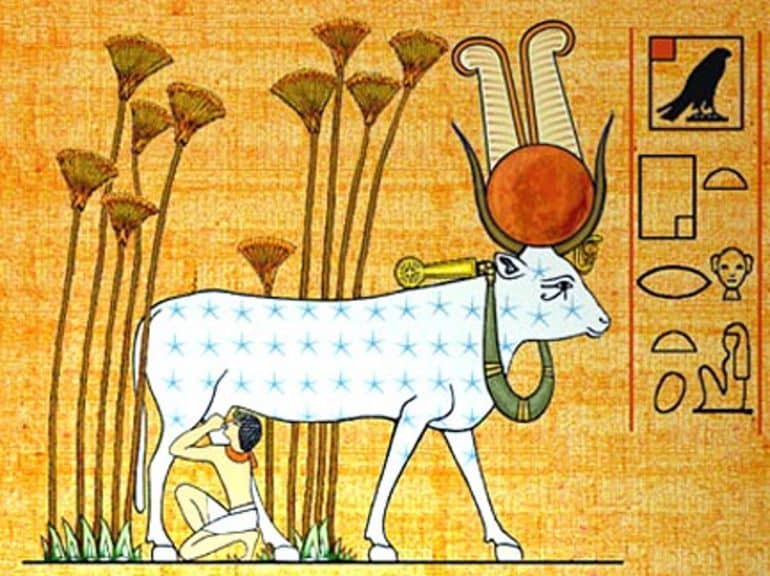
Hathor (meaning – ‘Domain of Horus’) was the ancient Egyptian goddess of joy, feminine love, and motherhood. She was closely associated (or was the successor) to Mehet-Weret, the celestial cow goddess (or ancient sky goddess) who was perceived as being responsible for bringing the floods to the Nile, which fertilized the land. Continuing with this possibly pre-dynastic concept, Hathor was also regarded as the mother of the sun god Ra.
As for her name referring to the ‘Domain of Horus’, Hathor possibly comes from the Egyptian myth of Horus – one of the prominent Egyptian gods (discussed later in the article), and how he entered her mouth to rest and then again come back at dawn.
Considering these aspects, suffice it to say, Hathor was regarded as a protective and benevolent deity who often personified kindness. She was also the patron goddess associated with matters of womanly love and health, so much so that many women beheld her as the counterpart to Osiris in the afterlife. In fact, by circa 1st millennium BC, many women in Ancient Egypt hoped for their assimilation with Hathor in the afterlife.
Furthermore, a creation goddess worshipped at Heliopolis was possibly a composite of Hathor and Atum. And as for her physical attributes, Hathor was often depicted as a woman with the head of a cow or having an entire cow form.
Later on, the bovine features were relegated in favor of a woman’s face (but still with cow’s ears or horns). She was also represented by the sistrum rattle-like musical instrument that was used to drive evil from the land – a facet that was later applied to the goddess Isis (the wife of Osiris).
Interesting Fact About Hathor: In the earliest myths of Hathor, she was a vengeful goddess sent by Ra to destroy mankind for its sins. However, dismayed by the approaching extinction of humans, the other gods implored Ra to stop Hathor. Heeding their plea, the sun god tricked the blood-thirsty Hathor into drinking red-dyed beer which resembled the blood of humans. Consequently, the ancient goddess fell asleep and then woke up as a benevolent deity of womanhood.
Bastet/Sekhmet: The Feline Goddesses – Deities of Love and War
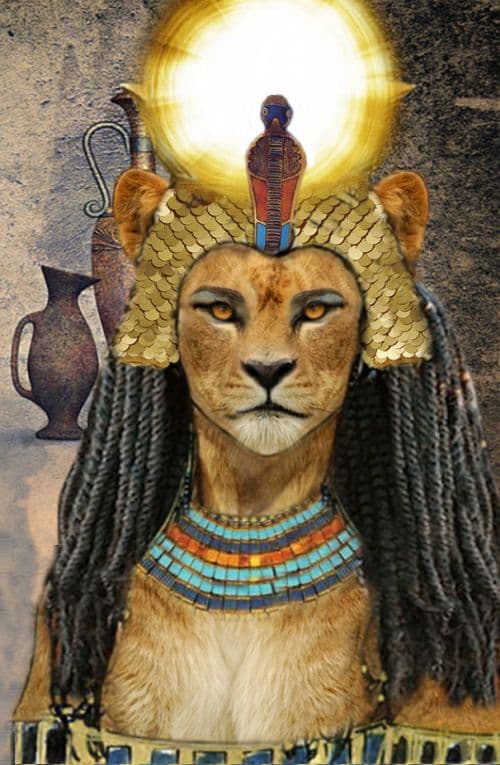
The ancient Egyptians certainly loved domesticating cats, and this cultural affinity was mirrored by the native Egyptian mythology and religion that popularized the worship of Bastet (or Bast), at least since the Second Dynasty period (post-29th century BC). Thus Bastet, with her cat-like head and woman’s body, was the benevolent, protective goddess of the home, love, fertility, joy, dance, women, and secrets.
To that end, cats were uniquely sacred in Egypt – so much so that the punishment for killing a cat was death by stabbing. According to Herodotus, Egyptians were so fond of their cats that they preferred to save their cats instead of themselves when trapped inside a burning building. Some cats were also known to be mummified in a ceremonious manner with jewelry – as was the case with many noble people.
Interestingly enough, according to a legend, the Persians took advantage of this seemingly unhealthy feline fascination of the Egyptians by positioning many such animals and Bastet images (painted on their shields) in the front lines at the Battle of Pelusium, circa 525 BC.
The adorable critters ranging from cats, and dogs to even sheep, dissuaded the animal-loving Egyptians from firing their arrows – thus allowing the Persians to take the initiative and win the battle.
And with all the talk about battles, it should be noted that Egyptians also venerated the protective goddess Bastet in the form of her ‘alter-ego’ Sekhmet – the warrior lioness. The lion-headed goddess was often given the epithet of ‘Sekhmet the Powerful’ and represented as the fiercest hunter in all of Egypt whose very breath formed the desert.
Interesting Fact About Sekhmet: She was also associated with the eye of Ra – the destructive force of the Sun God. Given such regal characteristics, it doesn’t really come as a surprise that many Pharaohs regarded the lion-headed goddess as their protector in battles.
Maat: The Goddess of Order – The Deity of Truth and Justice
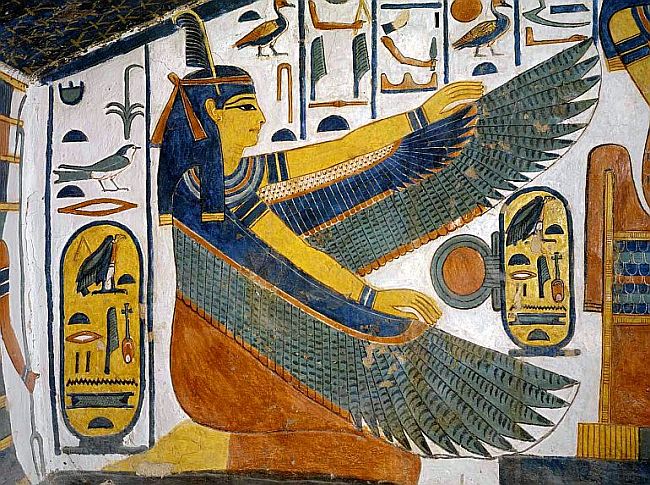
Maat (or ma-yet) was the Egyptian goddess of truth, justice, and, the cosmic order (alluding to the Egyptian concept of ma’at), who was responsible for regulating both the stars and the seasons. Venerated as an important deity during the Old Kingdom period (circa 27th century – 22nd century BC), she was considered the daughter of Atum (or Ra), and as such implied the superiority of order, justice, and even harmony.
Thus the concept of ma’at was seen as a guideline for human behavior that would conform to the will of the gods, thus in the process of establishing a universal order. This cosmic balance was also reflected in the studies of the ancient Egyptian astronomers who charted the Earth’s orbit with the celestial paths of the stars and other planets.
Simply put, this nature of balance was perceived as a principle that was to be adopted by thein their daily lives, which in turn established the virtues of truth, family life, and the belief system centered around the various deities. Consequently, the monstrous serpent god Atep (associated with chaos) was perceived as the opposite force to the very nature of ma’at.
And when it comes to her physical appearance, Maat was often depicted as a winged woman with an ostrich feather on her head. This apparel had symbolic significance since the feather of Maat was the instrumental object in the Weighing of the Heart ceremony in the afterlife.
Interesting Fact About Maat: The Egyptians believed that after their death, the heart of their soul was to be weighed against the feather of Maat in a ‘scale of justice’, which would allow the sections of their spirits (or life force) to be ultimately released to Akh (the composite soul).
Ptah: The Creator God – The Deity of Life and Crafts
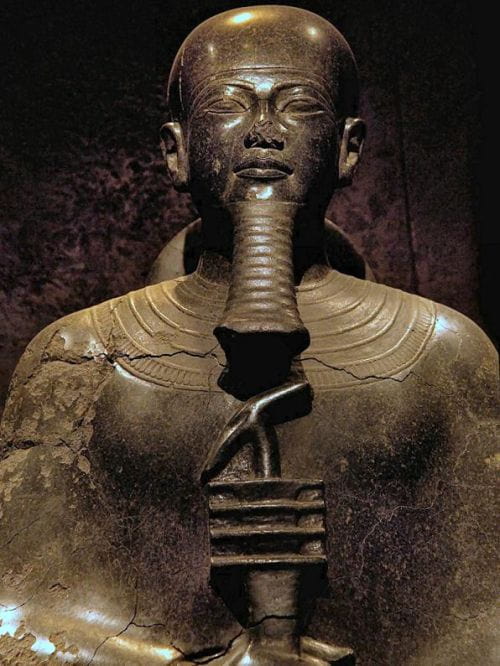
Ptah was the personification of creation. He was also one of the gods of ancient Egypt who formed the triad of Memphis (along with his spouse Sekhmet and daughter Nefertum), In essence, Ptah was perceived as the ultimate creator who not only fashioned the universe but also breathed life into the entities populating the world.
Ptah was also hailed as the ‘self-created one’, thus suggesting his specific role in creation, as opposed to the all-encompassing nature of the aforementioned Amun-Ra. To that end, Ptah was regarded as the patron god of sculptors, painters, builders, and other artisans. This allusion to his nature as a ‘master architect’ possibly also played a part in inspiring a few aspects of Christian theology and Masonic elements.
As for his physical nature, Ptah was often depicted as a mummified bearded man with green skin. His arms were kept free to hold a scepter, and his overall profile contained the three powerful symbols of ancient Egyptian religion: the Was scepter, the sign of life – Ankh, and the Djed pillar. In Egyptian history, these motifs suggested the combined essence of his creative prowess – power, life-giving ability, and stability.
Interesting Fact About Ptah: Suffice it to say, Ptah was a major god in ancient Egypt. In fact, the very name Egypt derived from Greek Aigyptos was originally borrowed from Hikuptah, corresponding to Egyptian Ha(t)-ka-ptah or ‘temple of the soul of Ptah’. Inside this religious sanctuary in Memphis. Ptah was the head of the triad of gods worshipped.
Nut: The ‘Starry’ Goddess – The Deity of the Sky
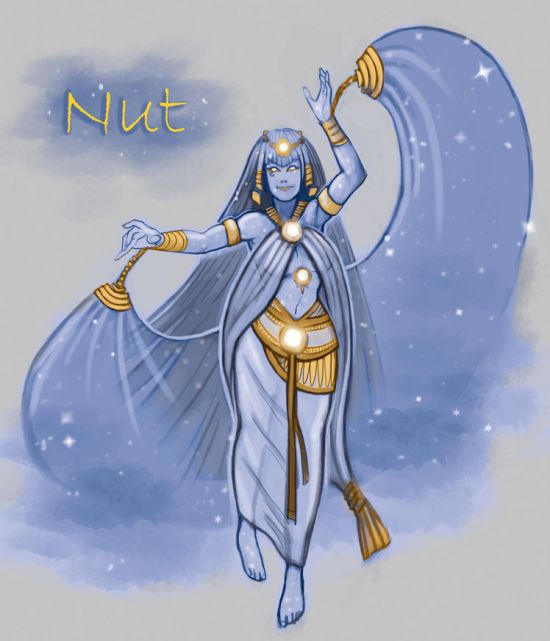
The daughter of Shu (God of Air) and Tefnut (Goddess of Moisture and Rain), Nut (or Nwt – pronounced ‘newt’) embodied the sky, stars, and the larger cosmos. In that regard, she was often represented with an overarching body over the Earth – which, in turn, was personified by Nut’s brother and husband Geb (the Earth god).
Nut was considered one of the oldest gods of Egypt, with her lore harking back to the founding story of Heliopolis, a city (corresponding to a present-day Cairo suburb) that had been inhabited since the Predynastic Period, circa 3100 BC. One hypothesis relates to how she was initially regarded as the goddess of the nighttime sky but later embodied the entire ‘heavenly’ sky.
Mythical narratives from ancient Egypt pertain to how Nut (the Sky goddess) mates with her husband Geb (the god of the Earth) to give birth to a host of powerful gods like Osiris, Isis, and Set. But the birthings had to be hidden from Ra (embodying the Sun), who decreed that Nut couldn’t use any days of the year for giving birth. That is because he feared that his throne might be usurped by the successive generation born out of the union of the sky and the earth.
However, the god Thoth appeared and came to Nut’s rescue by ‘adding’ five more epagomenal days in a year (which originally comprised 360 days). He achieved the feat by tricking Khonsu, the God of the Moon, and thus the births are given for five days illuminated by the moonlight instead of the sun. Nut was usually depicted wearing a water-pot headdress with the water-pot sign (nw) signifying her very name.
Interesting Fact About Nut: The goddess was often associated with the coffin or sarcophagi because it was believed that Nut was the protector of the dead on their journey to the afterlife.
Isis: The Egyptian Goddess Associated with Royalty and Magic
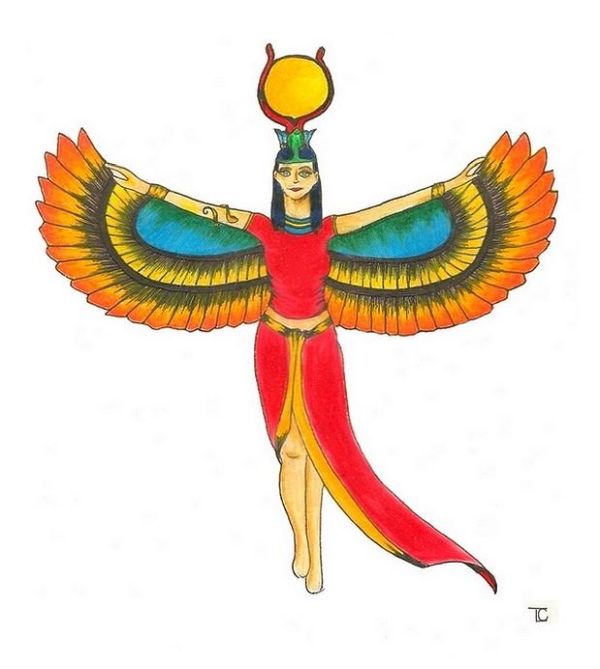
Isis was probably the most famous of all Egyptian goddesses. She was initially associated with Hathor, thus being seen as the patron god of many ‘motherly’ qualities. However, she further rose in significance during the Old Kingdom period, as one of the prominent characters of the Osiris myth (she is the wife of Osiris).
In this myth of Osiris and Isis, she not only resurrects her murdered husband, the divine king Osiris but also successfully gives birth to and protects his heir, Horus. Simply put, the great Isis was also venerated as the mother of Horus.
This narrative of the Osiris myth was symbolically mirrored in the affairs of the ancient Egyptian state, with the very name Isis being derived from Egyptian Eset, (‘the seat’), which refers to the throne. In essence, the Egyptian goddess, as the mother of Horus, was perceived as the divine mother of the kings. Consequently, Horus (discussed later in the article) was associated with the Pharaohs themselves.
This analogy of the throne was also prevalent in the very depiction of Isis, with her original headdress carrying an empty throne that signified the seat of her slain husband.
Over time, Isis was given various epithets like Weret-Kekau (‘the Great Magic’) and even Mut-Netjer (‘the Mother of the Gods’). Judging by these titles, it doesn’t come as a surprise that Isis overtook all the previous Egyptian goddesses in popularity.
In fact, later on, some of them were relegated (including the lion-headed Sekhmet) to mere aspects of Isis. Even the iconography of historically older female deities, like Hatmehit, the fish goddess worshipped in the Nile delta, was taken over by Isis.
Interesting Fact About Isis: The worship of Isis also reached beyond the traditional boundaries of ancient Egypt, to account for a persistent cult that was spread across the later Greco-Roman world. For example, there were temples dedicated to Isis in both Pompeii and Tivoli in Italy.
Osiris: The Dead God – The Deity of the Underworld
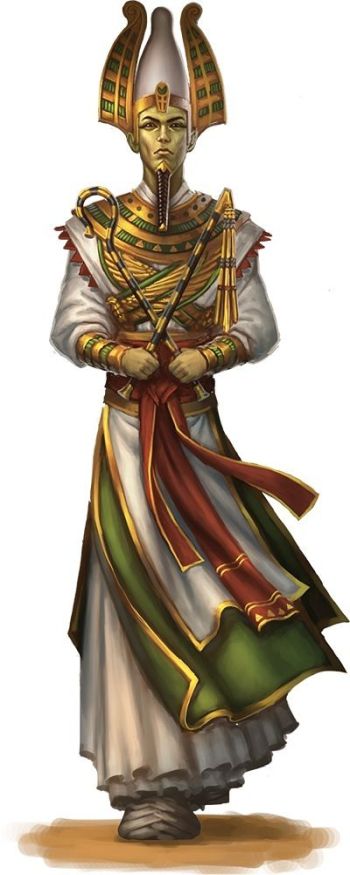
Osiris was one of the major gods of ancient Egypt during and after the Old Kingdom period (and one of the main characters of the Osiris myth). He was the husband of Isis, the father of Horus, and the brother of Set, and was often perceived as the king of the underworld.
A part of the later-formed Abydos Triad (comprising him, his wife Isis, and his son Horus), Osiris was possibly the only Egyptian deity who was directly referred to simply as a ‘god’. This alludes to his immense prominence among the ancient Egyptian worshippers (many of whom considered Osiris the first king of Egypt).
In addition to his role as the god of the underworld – a title that was passed to him after his murder by his brother Set, Osiris was also regarded as the god of transition (since the death in itself was not seen as an absolute condition) and even regeneration. Pertaining to the latter, Heryshaf, a fertility god depicted as a man with a ram’s head, was often identified with Osiris (and Ra).
Furthermore, Osiris also fulfilled his duty as the Judge of the Dead. Consequently, he was the central funerary god who decided the deceased’s fate after the aforementioned Weighing of the Heart ceremony (see the Maat entry).
Interestingly enough, in such cases, we can understand the pragmatic nature of the gods of Egypt and religion. For example, as opposed to advocating proper morality, the deceased was only expected to live a ‘balanced’ former life.
Finally, coming to the physical attributes of Osiris, the god of the underworld was often depicted as a mummified bearded king with green or black skin – to represent both death and resurrection. And as a living god, Osiris was represented rather ostentatiously as a handsome man in royal attire wearing the crown of Upper Egypt (a headdress known as the atef), while carrying the crook and flail, both symbols of kingship.
Interesting Fact About Osiris: While Osiris is often associated with regeneration, he was never believed to have resurrected – because Egyptians didn’t believe in the resurrection of the dead (even for gods). Thus the regeneration might have related to the continuation of the life cycle through our descendants on Earth.
Horus: The Falcon God – The Deity of War and Kingship
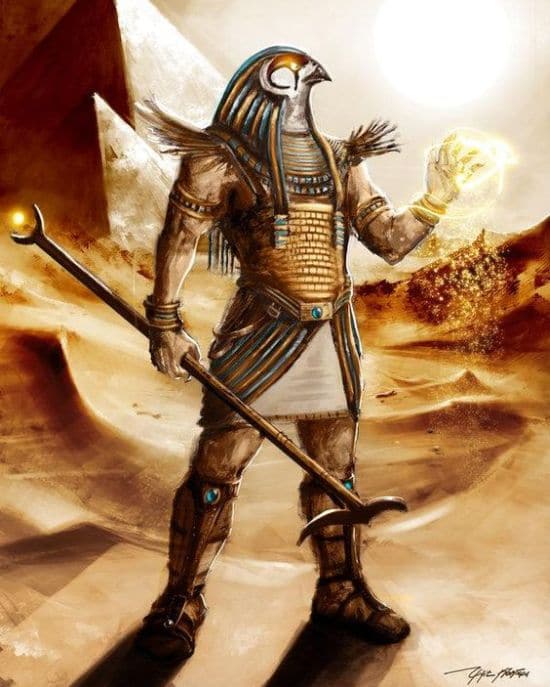
Horus, the most well-known of all ‘avian’ gods of Egypt, was also possibly one of the first known national Egyptian gods. In fact, Horus was worshipped in various forms and aspects from the Predynastic Period to the Roman Egypt epoch.
However, there are at least six known Horus entities that are mentioned in Egyptian mythology – and we will only talk about the deity otherwise hailed as Horus the Younger, the son of Osiris and Isis, and the rival of Set, his father’s murderer.
Completing the Abydos Triad, Horus, the son of Osiris, was regarded as a powerful sky god who was designated as the divine protector of the pharaohs. His legacy is also fueled by his epic mythical battle against the adversary Set – as a part of the Osiris myth.
Horus emerged victorious in this clash, thereby uniting the two lands of Egypt, albeit after losing one of his eyes. In essence, the avenging Egyptian deity was also perceived as a war god whose name was frequently invoked before actual battles by the rulers and commanders.
As for his physical attributes, Horus, the war god, especially when combined with the sun god Ra to form Ra-Harahkhte, was usually depicted as a falcon-headed man wearing a crown or pschent, the symbol of kingship over unified Egypt. On the other hand, his restored eye, personified as the Eye of Horus, was the ancient Egyptian symbol for protection and sacrifice.
Interesting Fact About Horus: Quite intriguingly, the Ptolemaic dynasty favored another cupid-like form of Horus known as Harpocrates (or ‘Horus the Child’), who was depicted as a winged child with a finger on his lips – suggesting the virtue of silence and keeping secrets. Interestingly, Harpocrates was perceived as the child of Hatmehit – the fish goddess (later absorbed by Isis), and Banebdjedet – the ram god (later possibly associated with Osiris).
Set: The Antagonist God – The Deity of Chaos
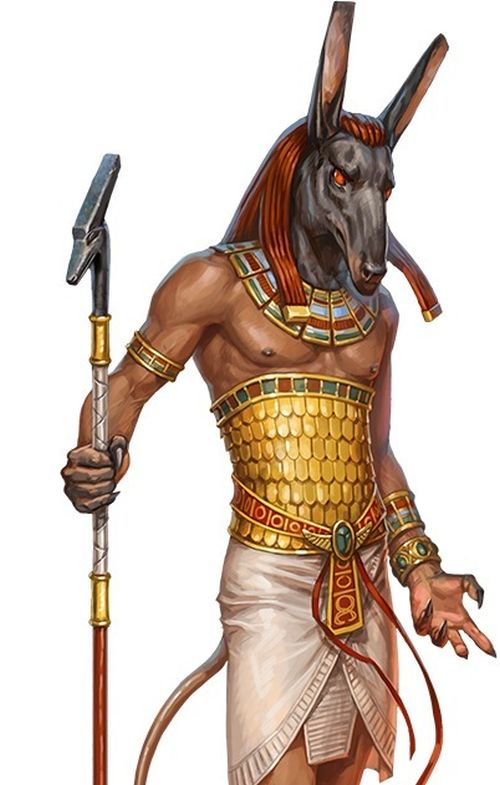
In the Osiris myth, Set was portrayed as the antagonist among the Egyptian gods responsible for murdering his brother Osiris. However, if we consider the historical evidence, Set was perceived as a divine entity since the Predynastic period (before the 3rd millennium BC), with his center of worship possibly originating from the town of Nubt, which is one of the oldest settlements in Upper Egypt.
And interestingly enough, Nubt served as the gateway to the eastern desert and its gold deposits, which possibly explains the association of Set with the deserts of Egypt.
In any case, Set was originally regarded as a more-or-less benevolent and esteemed entity who sometimes served as an ally of Ra, and was tasked with the protection of oases in the deserts. But over time, he was also associated with peculiar and frightening phenomena like eclipses, storms, and thunders – thus suggesting a dark side to his personification.
Other historians have hypothesized that the battle between Set and Horus, as opposed to a confrontation between good and evil, was rather a symbolic representation of the struggle to unite Egypt under one ruler.
Lastly, the ‘strange’ nature of Set as one of the dualistic gods is also manifested in his depictions. They often showcase a strange creature that is simply known as the Set animal, which could be a composite of an aardvark, a donkey, and a jackal (or a fennec fox).
Interesting Fact About Set: A few scholars have argued that the Set animal possibly represents a giraffe, though ancient Egyptians seem to have differentiated between giraffes and the enigmatic hybrid creature. And the Late Egyptian period (post 664 BC) artists tended to depict Set exclusively with a donkey head.
Min: ‘The Lord of the Eastern Desert’ – The Deity of Fertility
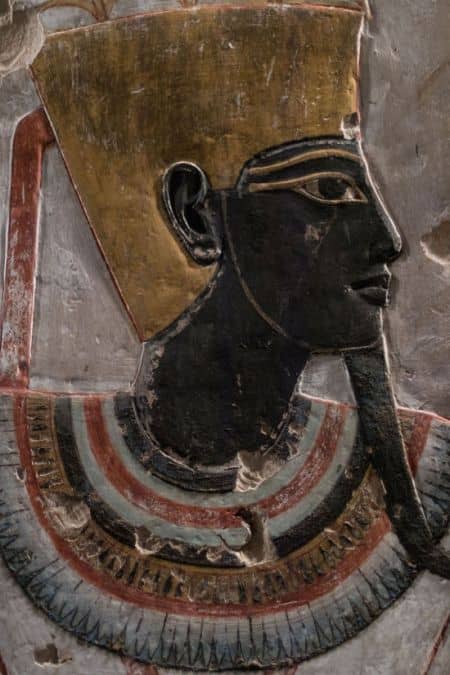
Min (also known as Menew and Amsu) was an ancient fertility god worshiped by the Egyptians whose origins go back to the Predynastic Period of the late 4th millennium BC.
It is entirely possible that the cults of the early era tended to worship objects like the barbed arrow as a symbol of the god. Over time, he was endowed with a human form and often represented through the double-headed arrow resembling Min Standard.
In the centuries leading up to the Middle Kingdom (circa pre-20th century BC), Min was regarded as the deity of the Orion constellation and was often associated with both thunder and rain. The Pyramid Texts also refer to Min as a patron of traveling caravans, traders, and miners, thereby making him the protector and Lord of the Eastern Desert.
By the Middle Kingdom era (circa 20th – 17th century BC), Min was increasingly perceived as a deity of fertility and male sexuality. During this period, the long-leafed lettuce was the symbol of Min, possibly because it was considered to be an aphrodisiac. The association with fertility was also mirrored by agriculture and verdancy – and thus harvests were celebrated with games and processions in his honor.
By the New Kingdom era, the rituals of Min possibly alluded to the metaphorical male seed in the form of plant seeds that had to be sowed by the Pharaoh to prove his virility. Furthermore, Min was perhaps also venerated as an aspect of Osiris, along with his worship as the composite god Ptah-Min.
Interesting Fact About Min: Min was often depicted with black skin – which probably symbolized the very fertile soil of the Nile River.
Anubis: The Jackal God – The Guide of Souls
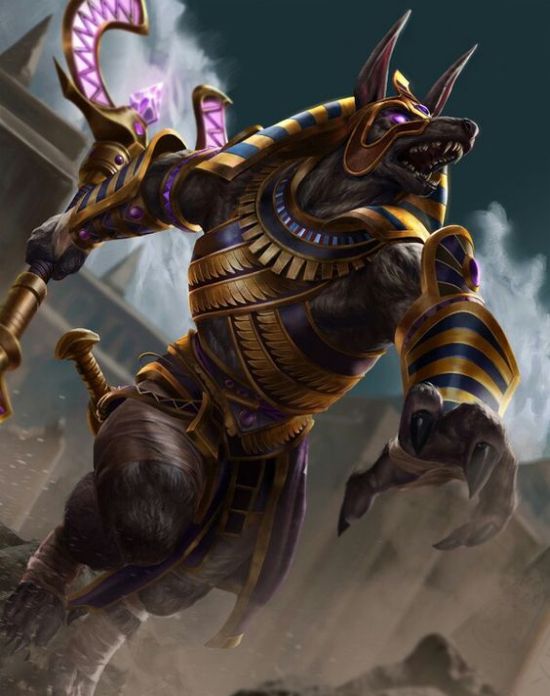
Anubis (or rather Anpu or Inpu in the Egyptian language) is one of the most visually recognizable of the ancient Egyptian gods. He was represented as a jackal-headed entity associated with the rites of embalming the deceased and the related afterlife – thus suggesting his epithet as the God of the dead.
And like many contemporary Egyptian gods, Anubis did have other aspects, but his core attributes were seemingly always related to the matters of death. For example, even during the 1st Dynasty period (circa 3100 BC), Anubis was perceived as a protector of graves – possibly to endow a positive aspect to the propensity of jackals who tended to dig up shallow graves.
To that end, Anubis was one of the rare gods, who in spite of his ancient legacy, was not venerated in dedicated precincts and temples (at least according to archaeological evidence or lack thereof). On the contrary, the tombs and mastabas of the dead were seen as his places of worship, including a particular shrine at Anubeion which contained the mummified remains of dogs and jackals.
Suffice it to say, Anubis was often related to the rites associated with death, and thus he played the role of the deity who ushered souls into the afterlife. Over time, he might have even overtaken Osiris as the main ‘judge’ in the Weighing of the Heart ceremony – as depicted in the scenes from the Book of the Dead.
Now in spite of his visually striking features and frequent ancient artistic depictions – that as we mentioned before, consisted of a black jackal’s head, Anubis played almost no part in the actual Egyptian mythology. And while the color black itself symbolized both desolation and rebirth, Anubis was possibly also associated with the god Upuaut (or Wepwawet), another deity with canine (or dog) features but with grey fur.
Interesting Fact About Anubis: Since Anubis was associated with embalming rites, his daughter Kabechet was the deification of the very embalming liquid used for mummification. In Egyptian myths, Kabechat, the celestial serpent deity, was venerated as the one who brought refreshing cool water to the souls of the dead.
Thoth: The Ibis God – The Patron God of Writing and Wisdom
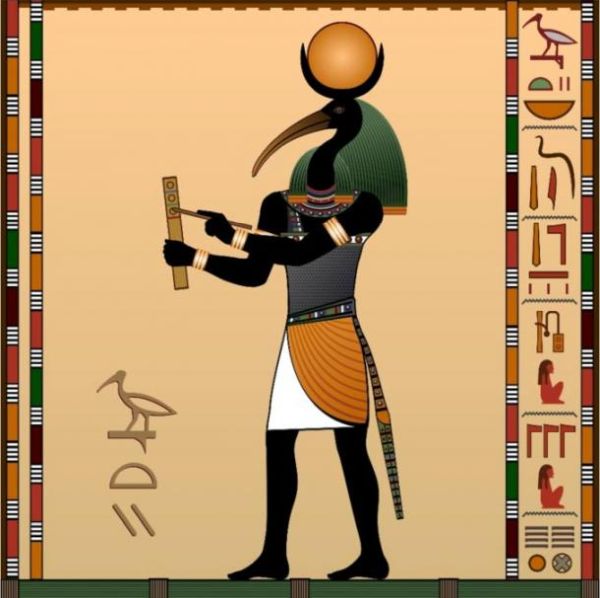
Thoth was an important god of writing, magic, wisdom, and the moon – who was worshipped in Egypt from the Predynastic Period to the Greco-Roman times. He was also closely associated with the principles of balance and equilibrium, which were often symbolized by his title ‘Lord of Ma’at’. And as such, Thoth was also portrayed as the husband of the goddess Maat, the deity of truth, justice, and cosmic order.
Quite interestingly, Thoth, the god of writing, had many origin stories in Egyptian mythology, with the older lore mentioning how Thoth was either born from the lip of Ra or was ‘self-born’, as an ibis, which lays the cosmic egg that holds all of the creation.
Later origin myths established Thoth as one of the characters of the Osiris saga, wherein the deity was oddly born when Set accidentally swallowed Horus‘ seed. In any case, given his stature as one of the major Egyptian gods of balance, Thoth equally healed and aided both the parties Horus and Set in their epic battle.
As for his physical attributes, Thoth was often depicted as a man with the head of an ibis. And considering his academic qualities, Thoth was widely perceived as the patron god of scribes, astronomers, priests, and some rulers (like Thutmose meaning ‘Born of Thoth’). He was also credited as the inventor of the alphabet, mathematics, surveying, geometry, and even botany.
Interesting Fact About Thoth: Thoth was sometimes also depicted as a dog-faced baboon or even a seated man with a baboon’s head. This was associated with his aspect of A’an, the god of equilibrium.
Sobek: The Crocodile God – The Deity of the Nile
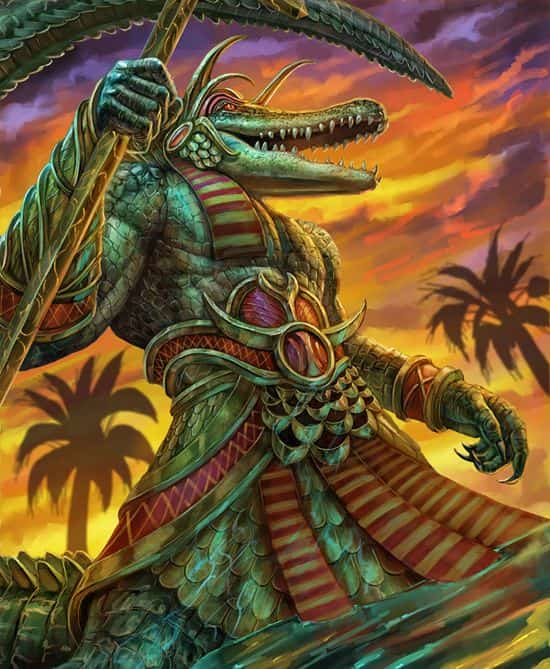
Sobek (also known as Sebek and Sobeq) represented the antithetical nature of the Nile – its life-giving fertile scope and the dangerous reptiles that resided within the river. The combination of these two opposites brought forth the veneration of the Crocodile God – Sobek, the deity deeply tied to the Nile.
To that end, Sobek was regarded as one of the creator Egyptian gods who rose from the obscure ‘Dark Water’ of Nun (discussed earlier) to create the Nile from his very sweat. Another myth notes how he laid eggs in the primordial waters of Nun to create the very world Egyptians lived in.
Historically, Sobek, the god of the Nile, was mentioned in the Pyramid Texts dating from the Old Kingdom period. But the crocodile god worshipped during the Twelfth Dynasty (circa 18th century BC) reached prominence, especially in the Faiiyum region of Egypt after the construction of a pyramid by Pharaoh Senusret II.
Incredibly enough, Sobekneferu (‘Beauty of Sobek’), possibly the first female ruler of Egypt, hailed from the very same dynasty. As for the scope of veneration, it is entirely possible that even live crocodiles were worshipped in some parts of Egypt as embodiments of Sobek. A hypothesis mentions how Sobek was revered as a form of appeasing the Nile, thereby alluding to his origins as a ‘dark’ god.
As for his depiction, Sobek was often represented as a man with the head of a crocodile that was further adorned with a plumed headdress and the Atef crown.
Interesting Fact About Sobek: Archaeologists have found mummified crocodiles of both adult and infant varieties in ancient Egyptian tombs, which rather alludes to the popularity of Sobek as one of the major Egyptian gods. In fact, Sobek as a deity was venerated even during the Greco-Roman times.
Taweret: The Hippo Goddess – The Deity of Protection
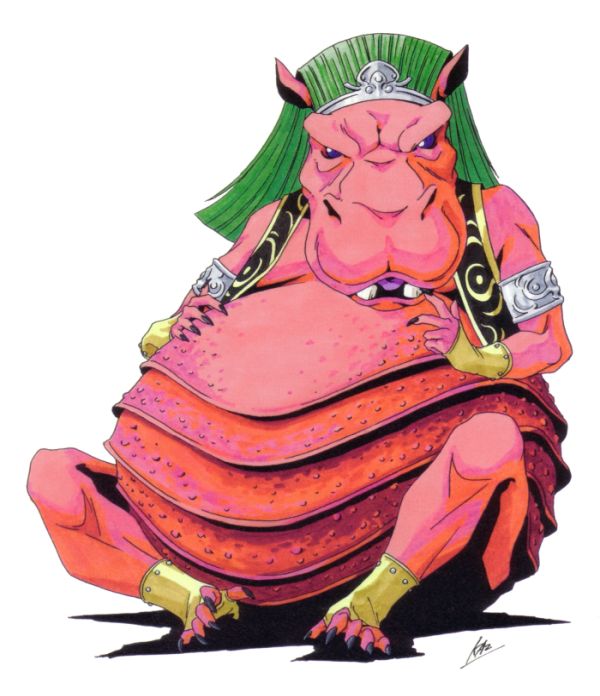
Taweret (meaning ‘she who is great’) was the patron deity and protective goddess of women and children – and thus was regarded as the ancient Egyptian goddess of childbirth. And interestingly enough, her veneration by the ancient Egyptians was possibly inspired by the ecology of Egypt before the Early Dynastic Period (pre 3000 BC), when the locals observed how the female hippopotami staunchly defended their young offspring from harm.
Over time, Taweret was also worshipped as an apotropaic god who had the power to ward off evil influences. To that end, it is known that Egyptian mothers carried amulets that were carved with the symbols or images of Taweret to invoke her protection. By the time of the New Kingdom, her likeness was also designed on objects related to feminity, like cosmetic applicators, jewelry, headrests, and vessels.
The physical attributes of Taweret were certainly inspired by the observance of hippopotamus behavior in ancient Egypt. Consequently, the Egyptian hippopotamus goddess was often depicted as a hippopotamus who was pregnant and carried the protective sa sign. However, her limbs were strikingly feline in nature, while her backside curiously resembled a Nile crocodile.
Interesting Fact About Tawaret: The Minoan Genius, a mythological creature (with the head of a hippo) from ancient Crete was probably derived from the Egyptian hippopotamus goddess Tawaret. However, the Minoan Genius was venerated as a ‘demon’ or lesser deity (albeit good-natured) in the Minoan religion, and its worship even spread to the Mycenaeans (Bronze Age Greeks).
Aten: The ‘Controversial’ Sun God – The Personification of the Sun
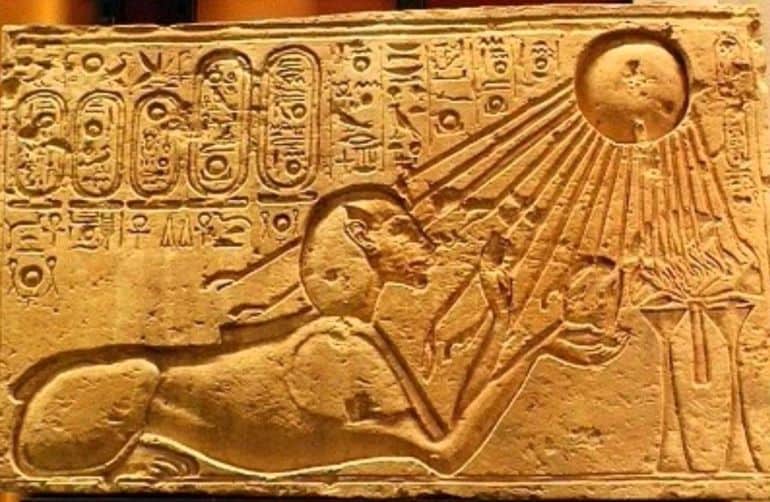
Aten personified the solar disk as visible from the earth – originally considered as an aspect of other ancient Egyptian gods, namely Ra. And like other aspects following the likeness of the main deities, Aten (originally a sun deity) was usually worshipped as a falcon-headed god, thus mirroring the image of Ra. On occasions, Aten was also hailed as the silver disc, thus suggesting its aspect of the moon.
However, during the reign of Pharaoh Amenhotep IV – who was later known as Akhenaten, the Pharaoh proclaimed that Aten, as a solar deity, was to be venerated above the other Egyptian gods. Simply put, Akhenaten declared a monotheistic (or possibly henotheistic) mode of religion across all of Egypt, with the worship centered around Aten. Such radical ideas from the ruler had deep-reaching effects on ancient Egypt’s society and culture.
But such measures ultimately resulted in reactionary counter-implementations of the traditional pantheon system – with the legacy of Akhenaten and Aten being intentionally wiped out by his successors after the defiant pharaoh’s death. Even the royal city of Amarna, the cult center of Aten, was razed by the later ‘traditionalists’; although some structural segments did survive to provide a historical glimpse into the royal city.
Interesting Fact About Aten: The royal city of Amarna boasted revolutionary architecture centered around the worship of Aten – the solar disk. For example, most of the temples were constructed without any roofing, thus symbolically allowing the unobstructed passage of the effulgent rays of the solar deity on the worshipers inside.
Khepri: The Beetle God – Associated with the Morning Sun
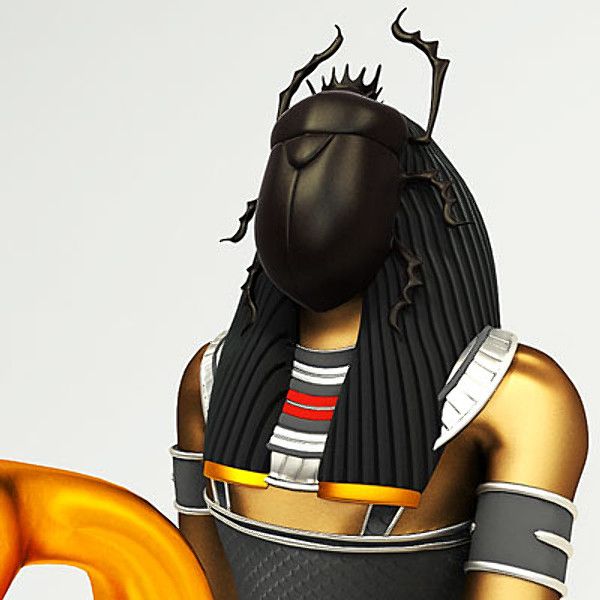
Connected to the scarab beetle, Khepri was one of the rare Egyptian gods who was usually depicted as a man with a beetle head in Ancient Egyptian funerary papyri. There was a symbolic side to the whole affair of Khepri worship – with the entity alluding to the divine forces that moved the sun across the sky.
This connection was derived from the action of scarab beetles when they rolled balls of dung across the rigorous desert surface – while the young beetles emerged from inside the dung, from the eggs laid by the parent. This is in fact related to the Egyptian word kheper, which roughly translates to – ‘to change’ or ‘to create’.
In any case, Khepri was also considered as being subordinate to the more exalted sun god Ra, which on occasion also translated to Khepri being one of the aspects of Ra. For example, Khepri was perceived as the personification of the morning sun, while Ra was seen as the more effulgent midday sun.
Interesting Fact About Khepri: The people of ancient Egypt also regarded Khepri as one of the Egyptian gods of rebirth. This was possible because the Egyptians believed beetles appeared out of nowhere and yet were able to procreate.
The Family Tree of the Gods and Goddesses of Ancient Egypt –

Summary of Ancient Egyptian Gods
1. Nun – The primordial Egyptian god associated with the watery mass that is the source of all aspects of divine and earthly existence.
2. Amun-Ra – The combination of two Egyptian deities Amun and Ra, thereby symbolizing the invisible force of wind and the visible majesty of the sun.
3. Mut – The Mother Goddess, sometimes venerated as the Queen of the Egyptian pantheon (as the later wife of Amun).
4. Khonsu – The Egyptian god of the moon is associated with time, healing, and even youthfulness.
5. Hathor – The benevolent Egyptian ‘Cow’ goddess associated with matters of womanly love and health.
6. Bastet/Sekhmet – Bastet was venerated as the benevolent Egyptian ‘Cat’ goddess of love, fertility, joy, dance, women, and secrets. Sekhmet, her alter-ego, was invoked as the warrior lioness deity who protected the Pharaohs.
7. Maat – The Egyptian goddess of truth, justice, and, the cosmic order.
8. Ptah – The Egyptian creator god with his life-giving ability – regarded as the patron deity of sculptors, painters, builders, and other artisans.
9. Nut – The Egyptian goddess of the sky who gave birth to Osiris, Isis, and Set, after the union with Geb, the god of Earth.
10. Isis – The Egyptian goddess venerated as the divine mother of the kings and often associated with magic.
11. Osiris – The Egyptian ‘Dead’ god regarded as the lord and judge of the underworld.
12. Horus – The Egyptian ‘Falcon’ god associated with the sky and warfare.
13. Set – The Egyptian deity represented darkness, often associated with eclipses, storms, and thunder.
14. Min – The Egyptian god of fertility and sexuality, also associated with agriculture and the growth of crops.
15. Anubis – The Egyptian ‘Jackal’ God, regarded as the protector of graves, guide of souls in the afterlife, and patron deity of embalmers.
16. Thoth – The Egyptian ‘Ibis’ god associated with writing, magic, wisdom, and the moon.
17. Sobek – The Egyptian ‘Crocodile’ god associated with the life-giving scope of the Nile River.
18. Taweret – The Egyptian ‘Hippo’ goddess regarded as the divine protector of women and children and associated with childbirth.
19. Aten – An Egyptian monotheistic god personifying the disc of the sun.
20. Khepri – The Egyptian ‘Beetle’ god is often perceived as the personification of the morning sun.
*Note – The article was updated on 11th October 2019.
Featured Image Credit: Sporcle
And in case we have not attributed or misattributed any image, artwork or photograph, we apologize in advance. Please let us know via the ‘Contact Us’ link, provided both above the top bar and at the bottom bar of the page.
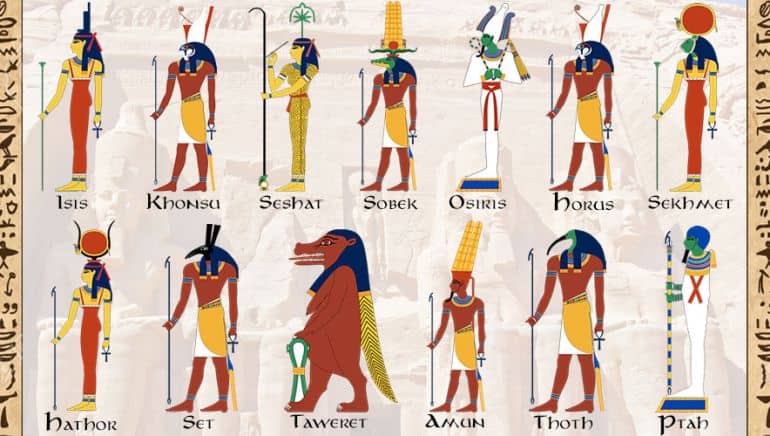
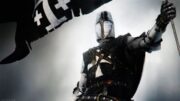

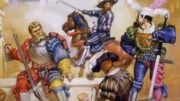

Be the first to comment on "20 Fascinating Egyptian Gods and Goddesses You Should Know About"